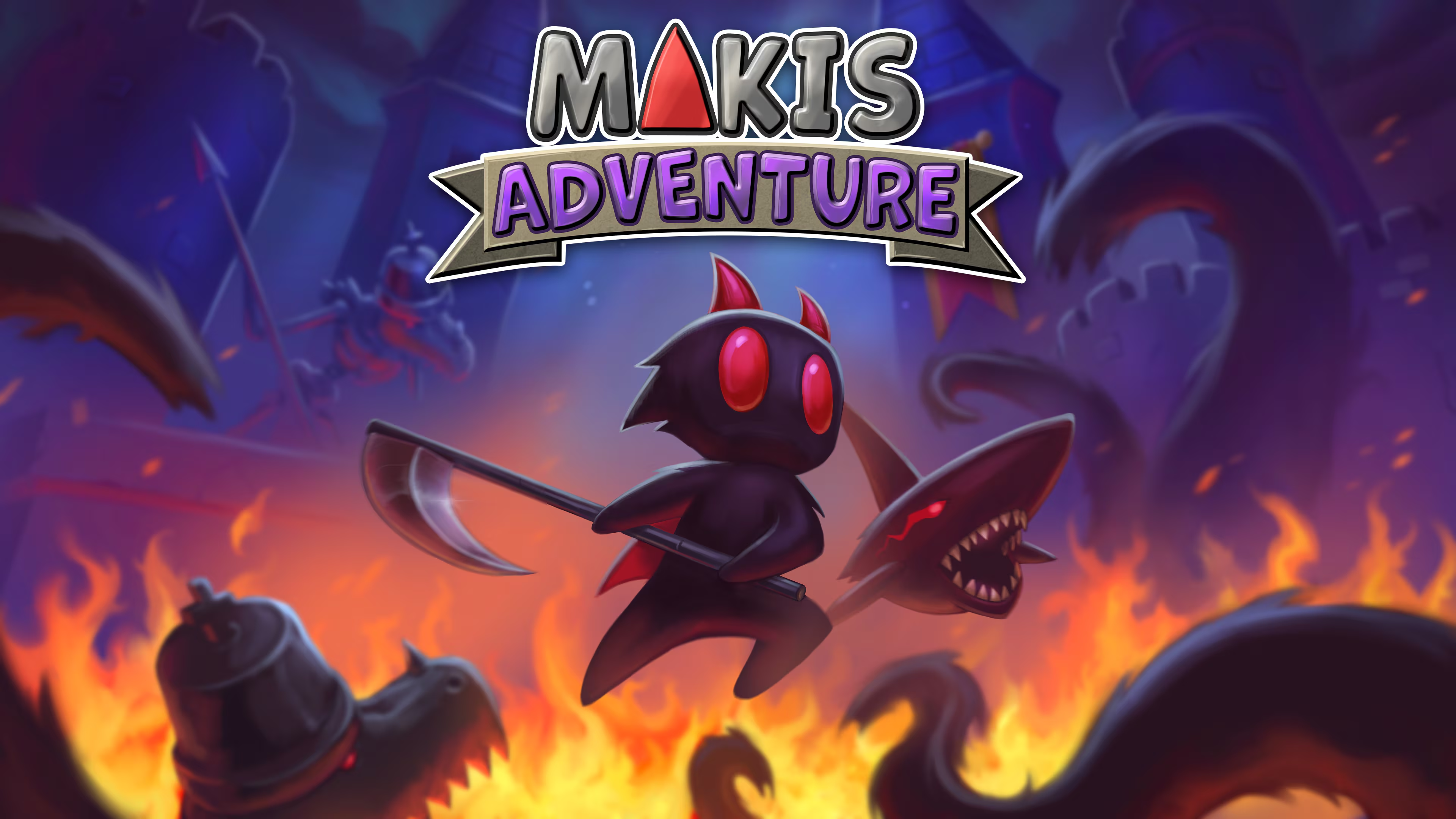Developed by ZoroArts and published by EastAsiaSoft, Maki’s Adventure is a bite-sized platformer that blends classic side-scrolling action with clever mechanics and heartfelt design. It’s a short but engaging adventure that encourages exploration and experimentation, whether you’re dashing across islands or slicing through shadowy demons. With some ideas polished to perfection and others rough around the edges, you can’t help but root for the developer even more. Here at Thumb Culture we reviewed the PC Release; and now we return with a review for the PlayStation release.
Maki’s Adventure – Maki a big splash
Let’s be honest, who doesn’t love the idea of shapeshifting into a shark mid-jump? We’re all in for that, and we’d love to hear about your favourite shapeshifting characters in the comments below!
Gameplay
What stands out most about Maki’s Adventure is how it welcomes all types of players from the get-go. There’s no need to complete the story before unlocking extra content: Boss Rush Mode and Speedrun/race are available right from the start, meaning challenge-seekers can dive straight in, while explorers and story fans can take their time soaking up the scenery. It’s an unusually player-friendly design choice for an indie platformer, and one that sets the tone for the game’s entire approach.
The main story follows Maki, a young warrior who fought against the demon Octavvio before being captured. Shadowy creatures and eerie environments create a foreboding backdrop as you make your way across several themed islands, each offering unique mini-games, treasures, and characters to meet. Exploration isn’t just an optional extra; it’s essential. Side quests aren’t always obvious, and skipping them can dramatically change your experience. One important side quest rewards you with a double jump, and if you miss it, your journey becomes much harder.
This design decision adds a Metroidvania-inspired layer of backtracking, encouraging players to revisit earlier areas with new abilities. Respite zones scattered across the map provide much-needed breathers, often introducing quirky characters like Pelipe and others that flesh out the world in a way that feels personal despite the short runtime.
Platforming is tight and satisfying, though there are some frustrating bugs. On occasion, transitioning between areas left me invisible and immobile, with only the sound of my jumps to prove I still existed. Thankfully, restarting usually fixed it quickly, but it’s a hiccup worth mentioning. The shark race mini-game suffered similar issues, which is a shame because it’s otherwise a fun diversion.
Shark gameplay deserves special praise. When Maki hits the water, he seamlessly transforms into a shark, using momentum to rocket through underwater sections. Each shark form has its own abilities of speed, destruction or attacking power. It’s this variety, plus darts mini-games, fishing, and ring challenges in the 3D hub, that keeps the two-hour campaign feeling surprisingly rich.
Graphics & Audio
Maki’s Adventure leans heavily into a retro-inspired aesthetic, somewhere between 8-bit and 16-bit, and it nails the look. Environments are vibrant, animations are fluid, and little details—like smoke curling from Maki’s scythe attacks give the game a polished feel. The 3D hub sections are less striking, feeling slightly clunky, but they effectively break up the 2D platforming.
Audio is one of the game’s strongest assets. Each island’s theme sets a distinct mood, with Naroxia’s classical tracks carrying a haunting quality, while Plantaia’s sweeping, almost cinematic music feels like it belongs in a much larger production. This makes the lacklustre boss encounters feel even more disappointing; the epic music sets the stage for something dramatic, but most bosses fall flat. Some vanish on defeat, while others awkwardly slump into the scenery, robbing those encounters of the spectacle they deserve. Even the sort of underwater Y2K music as you traverse the overworld is fantastic. Shame you can’t go underwater in the 3D mode though.
Safe zones all share the same jazzy track, which, while pleasant, becomes repetitive over time. Some variations here would have added depth, especially as these spaces are where you meet memorable characters. The lack of voice acting is noticeable but not a dealbreaker. Grunts and shouts when jumping or attacking give enough life to Maki without clashing with the retro vibe.
Longevity
Clocking in at around two hours, Maki’s Adventure is undeniably brief. However, there’s replay value for those keen to explore every nook and cranny. Optional side quests, hidden collectables, and the various mini-games offer incentive to revisit levels. Boss Rush and Speedrun modes provide challenge hunters with additional goals, while permadeath difficulty offers a real test of skill.
Despite its short runtime, the game doesn’t feel hollow. ZoroArts clearly poured love into crafting a world that feels cohesive and alive, even with its small scale. That said, a few quality-of-life improvements—such as better guidance on how to access the map and inventory, or more consistent platforming mechanics would help make this a smoother experience for less experienced players.
Final Thoughts
Maki’s Adventure isn’t perfect, but it’s brimming with charm and ambition. From its inventive shark mechanics to its side-quest-driven exploration, it offers more depth than many games twice its size. Technical hiccups and underwhelming boss design hold it back slightly, but these are forgivable in light of its creativity and heart.
For those seeking a short, satisfying indie title that blends nostalgia with originality. Take your time to explore, and don’t forget those side quests; you might discover that it makes all the difference.
Maki’s Adventure gets another Thumb Culture Gold Award
Disclaimer: A code was received in order to write this review.
If you enjoyed this review, why not check out Kyle’s take on cleaning up after monsters in his review of Monster Mop Up
YouTube | Facebook | Twitter | Instagram | Discord | Podcast

